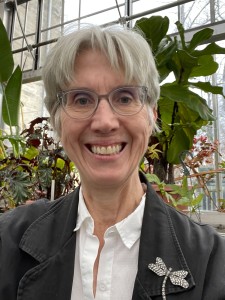The international treaty charged with protecting the world’s wetlands has named Siobhan Fennessy, a biology professor and Philip and Sheila Jordan Professor of Environmental Studies, as a female changemaker.
The recognition — announced March 8 for International Women’s Day — is part of an inaugural list highlighting 12 women across the globe for their contributions to the field. Fennessy was honored by the Ramsar Convention on Wetlands in the category “Wise Use of Wetlands” for her work in wetland conservation and restoration.
“It’s a thrill,” Fennessy said of being named to the first cohort of “Women Changemakers in the World of Wetlands.” “One of the best things about this recognition is that they really are emphasizing women in these roles who can be models for younger people coming up through the ranks.”
That was something in short supply when Fennessy entered the field. A photograph hanging on her office wall shows her with fellow presenters at a wetland conference about 20 years ago, the only woman in the middle of a group of 11 older men.
Over the years, she said, she learned the value of seeking out female mentors who would become integral to her success. And she has tried to provide that same support to female students at Kenyon.
“You need somebody that looks like you to be able to feel like, ‘Oh, I can do that, too,’” she said. “My earliest students are well into their careers now, and so they, in turn, are mentoring younger people, always passing it forward.”
Those former students include Ellen Herbert ’07, senior scientist at Ducks Unlimited and a leader on a project sponsored by the U.S. Department of Agriculture focused on evaluating how wetland restoration in agricultural landscapes can impact climate change. Fennessy is assisting in this five-year project, along with current student Rachael Tomasko ’25.
Fennessy also is working with Amanda Nahlik ’02, a research ecologist at the U.S. Environmental Protection Agency, on the National Wetland Condition Assessment, a national scale study of trends in the ecological “health” of wetlands
“Watching people go from your students to finishing their schooling, becoming peers and remaining friends all of that time, it’s pretty great,” said Fennessy, who received Kenyon’s Faculty Advising Award in the fall.
In announcing the recent honor for Fennessy and other women changemakers, Musonda Mumba, Secretary General of the Ramsar Convention, said, “The stories of these women collectively exemplify the transformative power unleashed when women and girls, including indigenous women, are supported and empowered to lead in the conservation of wetlands.”
Fennessy’s research focuses on how wetland plant species diversity and biogeochemical cycles respond to human disturbance and how that can be mitigated with ecological restoration. Her current work explores the role of wetlands in climate change mitigation and adaptation.
Wetlands are known as carbon hotspots due to their ability to take up and store large amounts of carbon. Their continuing loss and degradation results in significant losses of their carbon to the atmosphere, accelerating climate change. Prioritizing wetland protection and restoration can enhance climate adaptation and resilience, and Fennessy and her students are working to quantify the carbon wetlands hold, how it is lost, and how restoration can help recover these benefits.
A Fulbright Fellow in 2013 who studied Mediterranean wetlands in Spain, Fennessy has spent much of her career working to save what remains of Ohio’s wetlands and those around the world. She is vice chair of the Ramsar Convention on Wetlands’ Scientific and Technical Review Panel and recently finished serving three terms on the U.S. National Academies of Science’s panel to review progress on the restoration of the Florida Everglades.
Fennessy came to Kenyon in 1998 and has a Bachelor of Science and Ph.D. in environmental biology from The Ohio State University. She is the coauthor of “Wetlands,” a college textbook now in its sixth edition, and spent five years earlier in her career working at the Ohio Environmental Protection Agency, where she developed a program for restoring and replacing wetlands lost to property development.
